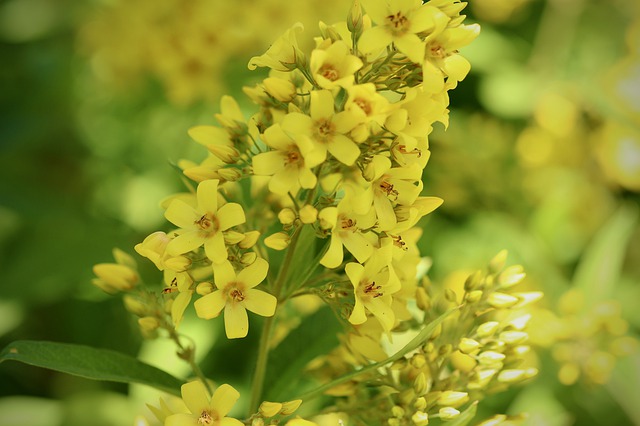 |  |  |  |  |
 |  |
Yellow Loosestrife is a perennial plant of the primrose family with a creeping root, long creeping shoots and an upright, hairy stem, 50-100 cm tall. The leaves are lanceolate, with a smooth edge, bare on top, with dots, bluish on the bottom, downy hairy, with short petioles. The leaves on the stem are arranged oppositely or in a row of 3-4. The flowers are bright yellow, 2 cm or more in diameter, located at the top of the plant, in a pyramidal inflorescence. Fruit a globose panicle. Blooms in June-August, fruits ripen in August-September.
For medicinal purposes, collect the above-ground part of the plant during flowering! After drying, the coarse stems are separated and the drug is prepared without them.
The plant contains 3-rutinoside myricetin, C, P vitamins, delphinidin, tannins, caffeic acid, nicotiflorin, picoumaric acid, primverase and cyanidin.
The plant contains vitamin C (leaves <1151mg; flowers <888mg%), flavonoids (rutin, nicotiflorin, 3-rutinoside myricetin), phenolcarbonic acids (caffeic acid, picoumaric acid), anthocyanins (delphinidin, cyanidin), enzyme primverase, tannins and saponins .
Medicinal significance
Yellow Loosestrife has antiseptic, astringent, hemostatic, analgesic, tonic, antiviral, anti-inflammatory, antipyretic and wound healing properties.
In folk medicine, yellow Loosestrife is used to treat internal bleeding, expectoration of blood, bloody diarrhea, dysentery, fever, heavy menstruation, gastritis, flu and as a remedy for scurvy.
The plant extract is used in compresses, applications and added to bath water to treat scrofula, rheumatism of joints and muscles, arthritis, it is used to rinse wounds and ulcers. It is used to rinse the oral cavity to prevent bad breath, inflammation of the mucous membranes, thrush and ulcerative stomatitis, and also to rinse the eyes with it to treat conjunctivitis and blepharitis.
Bleeding wounds are treated with the powder of the plant. Fresh or soaked leaves of the plant are applied in the form of applications to areas affected by rheumatism, polyarthritis, gout, as well as non-healing wounds and bruises. Plant juice also has bleeding-stopping properties.
In ancient times, ordinary yellow tea was used as ordinary tea.
A decoction of the plant is used in case of weakness and jaundice.
